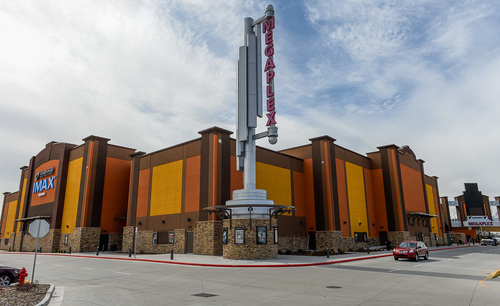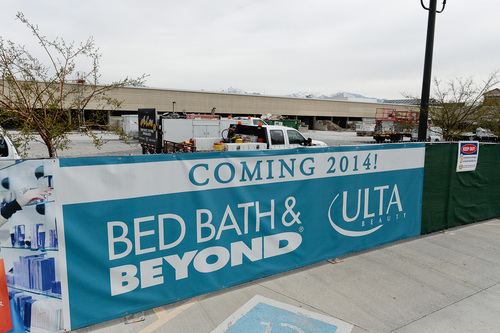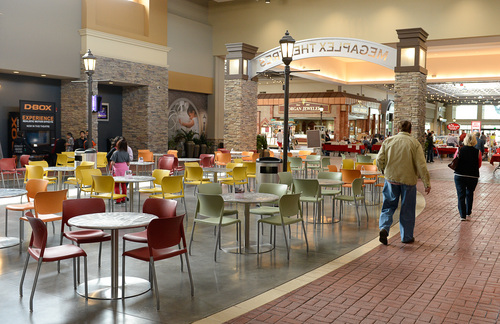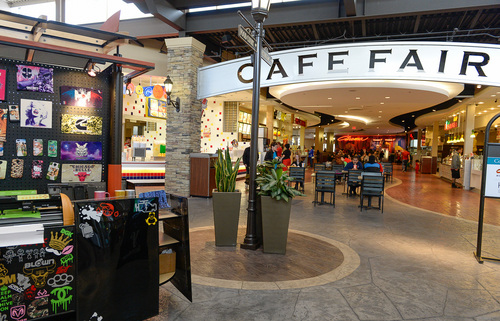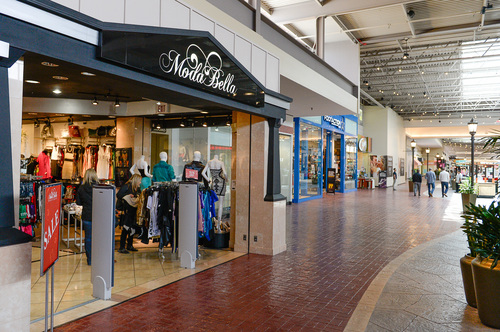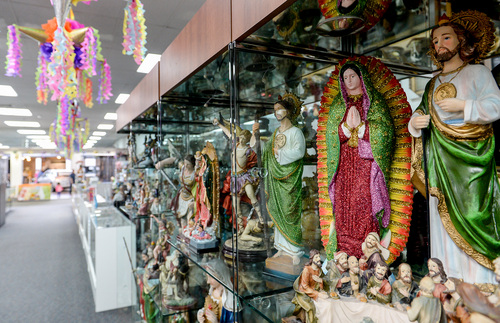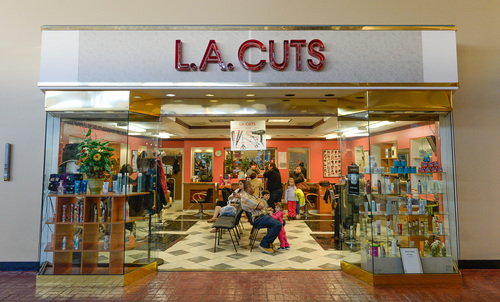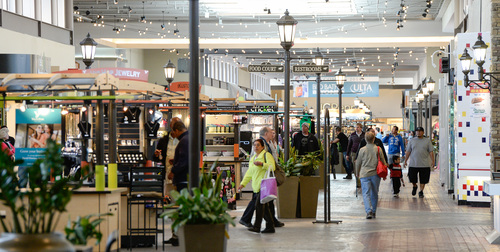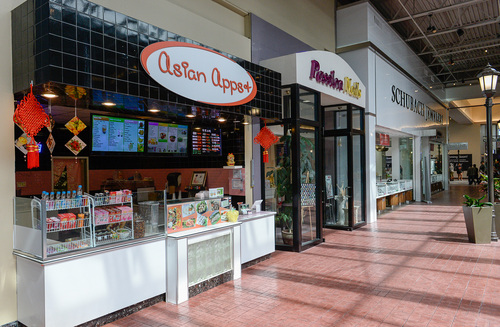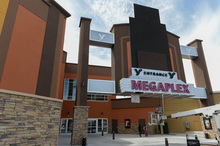This is an archived article that was published on sltrib.com in 2014, and information in the article may be outdated. It is provided only for personal research purposes and may not be reprinted.
West Valley City • Call the Valley Fair Mall the Lazarus of shopping centers.
In 2004 and 2005, it was almost dead. Owned by an indifferent out-of-state real estate company, it looked as though it would be razed like the Cottonwood Mall and replaced by a few large box stores.
But Valley Fair, which opened with great fanfare in 1969, refused to die despite benign neglect. When a shop closed, another tenant was usually there to take its place.
A combination of redevelopment agency investments by West Valley City, federal and state assistance, new local ownership in Satterfield Helm, work by brokers from Coldwell Banker Commercial Intermountain with experience in leasing Utah shopping centers and investments from national chains and local businesses such as the Larry Miller Group has brought Valley Fair back to life.
"The neighborhood and the city of West Valley has always adored and used that mall," said Richard Coles, vice president and associate broker for Coldwell Banker Commercial Intermountain, which has expertise in regional malls and represents more than 100 national retail tenants.
Consider that the construction of a new Costco, the replacement of the old Mervyn's store with a popular Larry Miller Megaplex Theater, an indoor remodel that gave the inside a park-like feel with benches, brick floors and old-fashioned light posts and major additions on the west side of the original mall took place during one of the worst economic downturns in U.S. history and the shopping center's rebirth is nothing short of amazing.
Consider these numbers:
• According to Beau Manwaring, senior leasing manager at Valley Fair Mall, traffic inside the shopping center is up 74 percent since 2009.
•Dollars per square foot on the inside of the mall, which is how the success of most centers of this type is measured, has increased 46 percent.
•Major franchises such as Bed Bath and Beyond and Ulta are currently building new stores on the west side but adjacent to the mall itself.
•The new Olive Garden is one of the top performing restaurants in the national chain. The new Wells Fargo bank is the top branch in the state for transaction volumes. Stores such as Ross and JC Penney consistently outperform similar stores nationally.
"I don't know of another mall in the country that has pulled out of a death spiral," said Manwaring. "Once you hit a certain dollars per square foot, it's done and they scrape it, like Cottonwood Mall. This is the only one I know to pull out of it."
Valley Fair Mall does contain many of the same national chains seen in most malls, with Macy's and JC Penney anchoring its south and north flanks. But what makes it unique is that a few local stores are included in the mix. This is also a mall where there are a few ethnic stores. It's possible to see signs in Spanish and Chinese and hear a number of different languages spoken. The food court, though currently struggling with a few empty spots, features some local eateries. Tacos Daniel is set to occupy a spot soon.
Cheron Parker, who owns Fads N' Fashions and Trinkets & Treasures inside the mall, said that there have been times when staying in business has been a struggle.
"I am happy about the changes they are making," she said. "Our customers like feeling that they get personalized attention. We put an outfit together for them. And Trinkets & Treasures has stuff you can't find at other places … I am liking it better all the time."
Kearns' teens Abby Zettler and Alexis Behunin are the kind of young customers most malls hope to attract.
"I think it's a great place to hang out with friends," said Zettler, 13. "It's a great place for weekends on Friday and Saturday. You have movies, food, shops and games."
"It's a fun place to hang out on weekends with friends," added Behunin. "We go to new stores and eat."
Pamela Armenta, who works at the Osaka Japan food court location, has been coming to Valley Fair since high school.
"Everything is changing," she said. "There are new stores. It's not the same as six years ago. It's a little slow, but it is coming back a lot. It is more friendly and reviving West Valley again."
And the mall continues to surprise even its owners.
Take, for example, the second run "dollar theater" that has operated inside Valley Fair for years. When the giant state-of-the-art Larry Miller Megaplex, a complex that sold nearly a million tickets, opened right next door, most thought the old theater would wither and die.
But sales at the Cinemark second-run theater have actually increased dramatically.
"We thought it would die, but there is so much traffic coming in there [the Megaplex], people can't get into the movie they want to because it is sold out, so they go to the dollar movie," said Manwaring. "It has helped their sales."
Not everyone is impressed though.
"It's fallen," said Scott Session of West Valley about the mall. "It's not how it used to be. There are more thrift shops now."
The huge and growing shopping complex is an important part of West Valley City, serving as its "downtown." City Hall, an apartment development and a new Embassy Suites hotel are located across the street. The West Valley TRAX line terminates near the mall as well. And city officials and mall owners worked hard with state and federal highway designers to bring an exit right off I-215 and into the mall's west parking lot.
None of this happened by accident.
Brent Garlick, West Valley City's redevelopment agency director, said things were difficult with the previous owners, a big national development company that was in the process of closing the mall when sales dropped in 2004 and 2005.
"In 2005, it was put up for sell and a local company, Satterfield Helm, had money to invest and approached us to see what our interest was in being their partner," said Garlick. "From day one, we worked together to try to turn the project around. A lot of people identify West Valley City with the mall, and it was in serious decline. It was not a positive image for the city to project."
So, West Valley City used a series of bonds paid for by tax increments coming from the development to help the private developers.
The first major coup was when the Redevelopment Agency talked Granite School District into moving Granger Elementary to a nearby 10-acre park. That site turned into the Costco, a major retailer that opened in 2007 and helped spur the mall's comeback.
In 2008, another bond helped finance a fountain, plaza and outdoor stores and restaurants with more of an outdoors, Gateway shopping center feel. This occurred during a national recession. Then, just as things were looking up, Mervyn's went bankrupt and closed one of Valley Fair's three major anchors. Another incremental bond helped purchase the building and land, tear down the Mervyn's and provide enough incentives for the $24 million Megaplex Theater complex to be built.
Garlick said that increased sales taxes from the developments will pay off those bonds in 10 years. The theaters have helped spur an increase in visits to the mall.
Coles, who managed the ZCMI Center for 15 years, is encouraged by what he is seeing at Valley Fair. He said Fashion Place in Murray is the state's most successful mall and the new City Creek Center in downtown Salt Lake City one of the newest and most striking malls in the country. But he said Valley Fair competes favorably with other Wasatch Front malls such as South Towne, Layton Hills and Newgate.
"The retail tenant is usually the last to the party and the first to leave," said Coles. "When the party gets going, we sell all the tenants coming. When it is weak, the tenants fall out. Right now, the tenants are coming. Back in 2006, they were leaving. The momentum is stronger and stronger."
Twitter: @tribtomwharton




